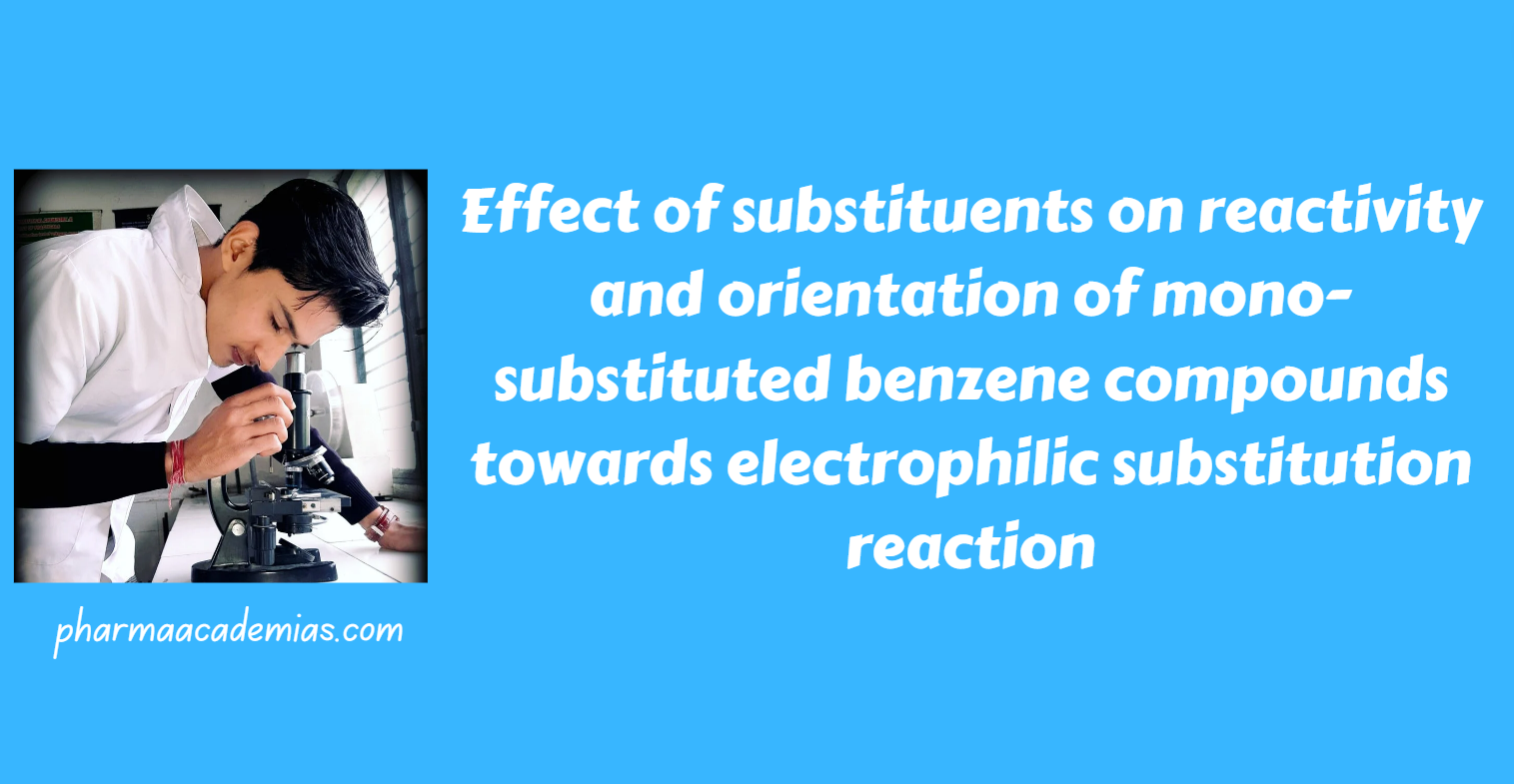The nature and position of the substituent influence the reactivity and orientation of mono-substituted benzene compounds in electrophilic substitution reactions. Electrophilic substitution reactions involve the replacement of a hydrogen atom on the benzene ring with an electrophile. The two main types of substituents are activating and deactivating, and they can further be classified based on their orientation effects.
Activating Substituents
Activating substituents in organic chemistry are functional groups or atoms that increase their electron density and enhance their reactivity towards electrophilic substitution reactions when attached to a benzene ring. These substituents facilitate the attack of electrophiles (electron-deficient species) on the benzene ring, leading to the replacement of a hydrogen atom. Activating substituents are generally ortho-para directors, meaning they direct the incoming electrophile to the ortho and para positions on the benzene ring.
1. Ortho-Para Directors:
Ortho-para directors are functional groups or substituents in organic chemistry that direct incoming electrophiles to the ortho and para positions in electrophilic aromatic substitution reactions when attached to a benzene ring. These groups enhance the reactivity of the benzene ring by increasing its electron density and promoting the attack of electrophiles.
Examples: Alkyl groups (e.g., methyl, ethyl), amino groups (NH2), hydroxyl groups (OH).
Effect: These substituents activate the benzene ring towards electrophilic substitution by donating electrons through resonance or inductive effects.
Orientation: They direct incoming electrophiles to the ortho and para positions. The ortho and para positions are more favored than the meta position.
2. Meta Directors (Weak Activators):
“Weak activators” is a term used in organic chemistry to describe functional groups or substituents that, when attached to a benzene ring, have an activating effect on the ring’s reactivity toward electrophilic aromatic substitution reactions. However, these groups also exhibit some characteristics of deactivating substituents, particularly in directing the incoming electrophile to the meta position.
Examples: Halogens (F, Cl, Br, I).
Effect: While these substituents activate, they also exhibit a meta-directing effect, making the reaction slower than ortho-para directors.
Orientation: They direct incoming electrophiles to the meta position. The meta position is favored over the ortho and para positions.
Deactivating Substituents
Deactivating substituents in organic chemistry refer to functional groups or atoms that, when attached to a benzene ring, decrease its electron density and reduce its reactivity toward electrophilic aromatic substitution reactions. These substituents make the benzene ring less nucleophilic and direct incoming electrophiles to specific positions, often favoring the meta position.
1. Meta Directors (Strong Deactivators):
“Strong deactivators” is a term used in organic chemistry to describe functional groups or substituents that, when attached to a benzene ring, significantly decrease its electron density, leading to a reduced reactivity in electrophilic aromatic substitution reactions. These substituents strongly influence the position at which an electrophile reacts on the benzene ring, favoring the meta position.
Examples: Nitro group (-NO2), sulfonyl group (-SO3H), cyano group (-CN).
Effect: These substituents strongly deactivate the benzene ring towards electrophilic substitution.
Orientation: They direct incoming electrophiles to the meta position. The meta position is strongly favored over the ortho and para positions.
2. Ortho-Para Directors (Weak Deactivators):
The term “Ortho-Para Directors (Weak Deactivators)” is a bit contradictory, as ortho-para directors are generally associated with groups that increase the reactivity of the benzene ring. At the same time, weak deactivators tend to decrease reactivity. It’s important to clarify that in organic chemistry, the classification of substituents into activators or deactivators is separate from their ortho-para directing or meta-directing tendencies.
Examples: Halogens (F, Cl, Br, I) with an electron-withdrawing group attached.
Effect: While these substituents deactivate the ring, they are ortho-para directing, but not as strongly as the activating groups.
Orientation: They direct incoming electrophiles to the ortho and para positions, but the meta position may also be involved.
Understanding the effects of substituents is crucial for predicting the outcome of electrophilic substitution reactions in mono-substituted benzene compounds. The electronic effects, resonance, and inductive effects of substituents play a key role in determining reactivity and orientation.

